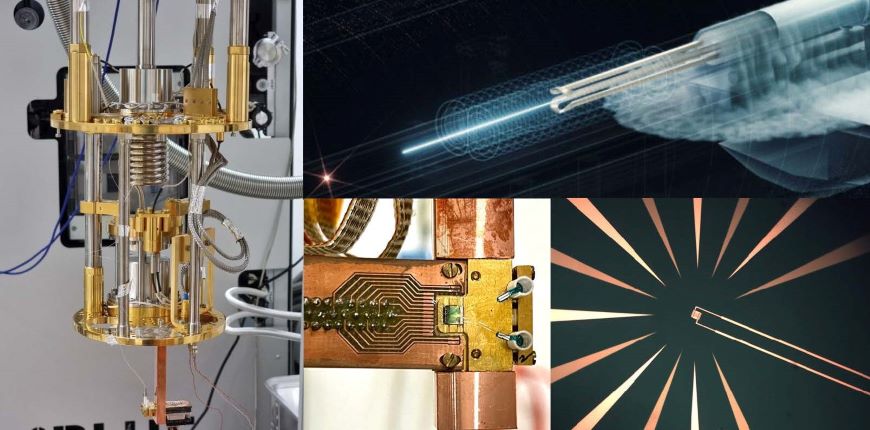In our group we try to understand the nature of the mysterious dark matter. Dark matter makes up roughly 85% of all matter in the Universe and could consist of yet-undiscovered elementary particles.
Theory predicts that dark matter could possibly reveal itself in very weak interactions with light. In particular, we contribute to the ALPS II at DESY in Hamburg. The experiment aims to produce hypothetical particles, so-called axions, by sending a powerful infrared laser beam into an optical cavity and through a magnetic field. Laser photons could convert to axions in the magnetic field, leave the cavity, and re-convert into photons in a second magnetic field. The number of reconverted photons will be tiny (we expect at most around one photon per day). Therefore, we need sensitive single photon detectors and an effective suppression of any potential background. One investigated detector technology is a superconducting transition edge sensor (TES) that counts photons at a temperature close to absolute zero.
Here at SDU, we are investigating ways to reduce the number of spurious photons reaching the detector. One possibility is to use an optical filter inside the cryostat which we are currently building in our lab. We are also looking into using machine-learning algorithms to achieve a better discrimination between signal and background events registered with the detector. We furthermore investigate further use cases of the TES in the realm of quantum computing and quantum information.
Contact
Associate Professor Manuel Meyer
